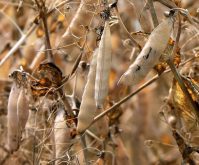MarketsFarm — Statistics Canada (StatCan) showed a mostly tightened outlook for Canadian pulses in its first model-based supply/demand estimates for the 2023-24 marketing year.
StatCan on Tuesday released those projections, which largely presented a reduction in yields due to ongoing dry conditions on the Prairies. As of July 31, Canadian dry field pea output was estimated at 2.191 million tonnes, a 36 per cent decline from the 2022-23 total and its lowest yearly figure in 20 years.
Read Also

U.S. livestock: CME cattle tick lower in thin pre-holiday trade
Chicago | Reuters – Chicago Mercantile Exchange live and feeder cattle futures were little changed but ended slightly lower on…
Lentils showed a similar decline, producing 33.2 per cent less at 1.537 million tonnes, its lowest total since 2009.
Dry bean production was pegged at 269,934 tonnes, compared to 312,994 last year while hitting a seven-year low.
Meanwhile, soybean production was expected to see a 2.9 per cent increase from last year at 6.735 million tonnes. Chickpea production was slated for 3.6 per cent growth to 132,575 tonnes.
Pulse Canada director of market access and trade policy Mac Ross said while there were drier-than-normal conditions in many parts of the Prairies, he does not expect a repeat of the yield cuts caused by the 2021 drought.
“We’re likely going to be better off this year with pockets that fared a little better than others, but we also had less acres on major pulses lentils and peas this year,” Ross said.
Both projections for lentils and peas were well below pre-report trade expectations and the potential lack of supply was reflected in recent price movement. High-delivered bids for lentils ranged from 30.3 to 60.5 cents/lb. as of Monday, according to Prairie Ag Hotwire. Prices have risen between three to eight cents compared to last month and between 4.3 to 18 cents since last year.
High-delivered bids for chickpeas ranged from 35.5 to 51.5 cents/lb., with most varieties gaining seven cents in price over the past month and between 2.5 to 10.5 cents compared to one year ago.
“We’re seeing on the lentil and chickpea side prices going up. We know in India there’s some real concern regarding their kharif planting and the effect El Niño is having on supplies. There’s also some questions about the size of the North American crop,” Ross added.
“The drier conditions we’re seeing in Canada is not just a Canada story. The El Niño effect is kind of impacting production globally and it’s something we’ll have to watch.”
He added that lentil demand from India and pea demand from China are both still very strong, despite a slight decline in the latter. Meanwhile, domestic demand continues to move forward.
“We’re seeing a trend of increased domestic processing here in Canada. We have now about 600,000 tonnes of pulse processing alone here in Canada. If you look at that in terms of volume stacked up with our export markets, the Canadian domestic market is now second behind China as far as our largest markets,” Ross said.
— Adam Peleshaty reports for MarketsFarm from Stonewall, Man.
















